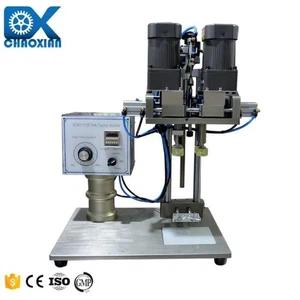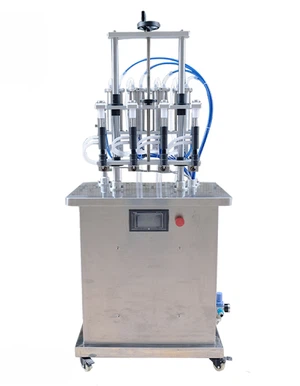Introduction to the working principle of filling and sealing machine
Sep 25, 2019
Leave a message
Introduction to the working principle of filling and sealing machine
Introduction to the working principle of filling and sealing machine
Filling and sealing machine can smoothly and accurately inject various materials such as paste, paste and viscosity fluid into the hose, and complete hot air heating, sealing and batch number, production date and so on. It is suitable for the filling and sealing of large-diameter plastic pipes and composite pipes in medicine, food, cosmetics, daily chemical products and other industries.
The filling and sealing machine is determined by several parameters. It is impossible to describe a filling and sealing machine with any single parameter. Shaft power (P), blade discharge (Q), head (H), blade diameter (D), and fill speed (N) are five basic parameters that describe a filling and sealing machine.
The discharge volume of the blade is proportional to the flow rate of the blade itself, the primary of the blade rotation speed and the cube of the blade diameter. The shaft power consumed by the filling is proportional to the specific gravity of the fluid, the power level of the blade itself, the third of the rotational speed and the fifth power of the blade diameter. In the case of a certain power and blade form, the bucket discharge (Q) and the head (H) can be adjusted by changing the matching of the diameter (D) and the speed (N) of the blade, ie the large diameter blade Filling and sealing machines with low speed (with guaranteed shaft power) produce higher flow and lower heads, while small diameter blades with higher speeds produce higher heads and lower flow effect.
In the filling tank, the only way to make the micelles collide with each other is to provide a sufficient shear rate. From the filling and sealing mechanism, it is precisely because of the difference in fluid velocity that the fluid layers are mixed with each other. Therefore, the filling process always involves the fluid shear rate lhhaha620. Shear stress is a force that is the real cause of bubble dispersion and droplet breakage in filling applications. It must be pointed out that the shear rate of each point of the fluid in the entire agitation tank is not consistent.
.
Experimental studies have shown that for the blade area, the maximum shear rate and the average shear rate increase with increasing speed when the blade diameter is constant regardless of the slurry type. However, when the rotational speed is constant, the relationship between the maximum shear rate and the average shear rate and the diameter of the blade is related to the slurry type. When the speed is constant, the maximum shear rate of the radial blade increases with the increase of the blade diameter, and the average shear rate is independent of the blade diameter. These concepts regarding the shear rate of the paddle zone require special care in the shrinking and amplifying design of the filling and sealing machine. Small tank filling and sealing machine often has high speed (N), small blade diameter (D) and low tip speed (ND), compared with large tanks, and large tank filling and sealing machine It often has characteristics such as low rotation speed (N) large blade diameter (D) and high tip speed (ND).
Send Inquiry





